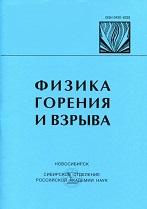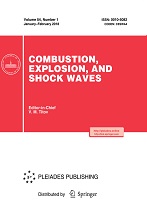|
This article is cited in 4 scientific papers (total in 4 papers)
Radiative fraction and flame length of propane jet diffusion flames in a crossflow
J.-W. Wangab, J. Fanga, J.-F. Guanb, L.-Y. Zhaoa, S.-B. Lina, H. R. Shaha, Y.-M. Zhanga, J.-H. Suna
a University of Science and Technology of China, 230026, Hefei, Anhui, China
b Tsinghua University, 230601, Hefei, Anhui, China
Abstract:
Many industrial combustion devices rely on jet flame combustion in the crossflow to achieve mixing and reaction. Previous research offers a limited predictive capability regarding the coupling effects of the crossflow and jet flow on the flame radiative fraction. In this work, a new theoretical equation is derived to relate the radiative fraction to the fuel flow rate and the crossflow velocity. The experimental results show that the flame length increases as the crossflow velocity increases for all considered flames. The results of this work suggest that the stretching factor is 0.08 s. The radiative fraction is almost independent of the nozzle diameter in the case of a low crossflow velocity. The crossflow has the strongest effect on the radiative fraction for a smaller nozzle diameter. This is because of the effect of the crossflow and jet flow velocities on the soot residence time, which is proportional to the radiative fraction.
Keywords:
crossflow, propane, radiative fraction, soot, turbulent diffusion flame.
Received: 09.01.2020
Revised: 19.02.2020
Citation:
J.-W. Wang, J. Fang, J.-F. Guan, L.-Y. Zhao, S.-B. Lin, H. R. Shah, Y.-M. Zhang, J.-H. Sun, “Radiative fraction and flame length of propane jet diffusion flames in a crossflow”, Fizika Goreniya i Vzryva, 56:4 (2020), 5–13; Combustion, Explosion and Shock Waves, 56:4 (2020), 375–382
Linking options:
https://www.mathnet.ru/eng/fgv690 https://www.mathnet.ru/eng/fgv/v56/i4/p5
|


| Statistics & downloads: |
| Abstract page: | 24 | | Full-text PDF : | 4 |
|





 Contact us:
Contact us: Terms of Use
Terms of Use
 Registration to the website
Registration to the website Logotypes
Logotypes








 Citation in format
Citation in format 
